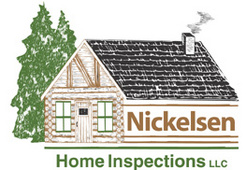
I recently did an inspection on a home built in the early 1990's that had cement fiber lap siding on it. It is doubtful (well, it isn't doubful, but definite) that the home originally had LP - Louisiana Pacific siding on it: the so called "first generation" LP siding, which was involved in litigation for its propensity to failure. I see this often. Why is it replaced? Most of the time it is replacd because the siding was decaying, but that is not what I wanted to discuss in this post.
Hardie Plank (which this siding does not appear to be) is the most prominent of the "fiber cement" siding products, but there are other manufacturers as well (Certainteed, etc.). In the last few years, all manufacturers (all that I know of at least) have moved to strongly prefer or specifically demand that the field/butt joints be flashed, not caulked. As recently as last year, Hardie Plank could still be caulked at the joints which, as they say, "does not void the warranty", but their "preferred method" is the use of flashing. Other products, such as Certaineed, specifically state that flashing is to tbe used at the joints, and they don't say anything about caulking (http://www.certainteed.com/resources/fc017.pdf). If (and that is a big if) a home inspector is going to note of improper siding installations then they better have the knowledge to back it up. Technically, it is beyond the scope of any Standards of Practice for an inspector to know or refer to Code, installation instructions, etc. But, I think it is helpful. I have had, for example, realtors call me saying that they had their home inspected by ***** and they said that the siding was installed "incorrectly" because there was no flashing at the joints. They ask me to come and look at it. Usually the inspector is wrong. And they get in trouble because they state that it isn't installed "correctly". If they would have just said, "it would be preferred...", or something like that, then they would be fine. But, stating that something is correct or incorrect requires more knowledge than some inspectors have (and, to be fair, are required to have). It wasn't until 2008 that they started to strongly emphasize the use of flashing, and James Hardie has never said that you HAD to use flashing at the joints, though it is obviously a vastly superior installation practice. [Note: there is another, less common, type of Hardie Plank Lap Siding, which is called Color Plus. This version, which comes precolored, has never given the option for caulking: it has always stated that you must use flashing. But, this siding, as noted, is extreamly rare, at least in my part of the world].
So, to this home: as noted, the siding was replaced, and it was replaced in the last couple of years (so, since 2008). There were a couple things wrong with the installation: 1) the gaps are too large. All manufacturers specifically state that the joints are to have "moderate contact" or they are to have a gap that is no more than 1/8th of an inch. Regardless, this isn't the main issue. 2) the main issue is that over 19 of the joints had no flashing AND no caulking. You could see the house wrap on the home. This, is a notable issue, especially when combined wiht the fact that on the south and west sides of the home (the highest profiled areas for wind and rain in this region) you have caps that are over 1/4 of an inch and some approaching 1/2 an inch. To rectify this, flashing would need to be installed after the fact, which can work, but isn't the preferred manner of handling the flashing given that you can't nail it in place along with the siding. It is a fixable issue, but one that is important to fix.
Now, when I have mentioned this in the past I have faced a series of objections, but one of them which I find the most humorous is this: "Well, the house has Tyvek or house wrap on it, so if water gets behind the siding then it is going to be ok." To this I offer the following: 1) the house wrap is intended to be a secondary, not a primary, means of keeping moisture out of the wall (which is really only one of its functions anyway). 2) you are assuming that the entire home has house wrap and that it was installed properly. In reality, we don't know how it was installed, and subsequently we should be attentive to what we can see (the siding) and ensure as best as we can that no water will get behind it. The primary area of moisture intrusion will be these large joints, so we want to make sure that they are treated properly.

Comments(1)